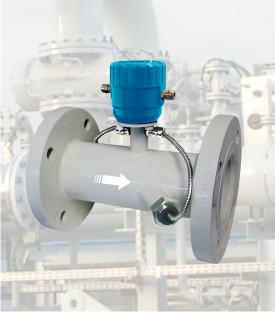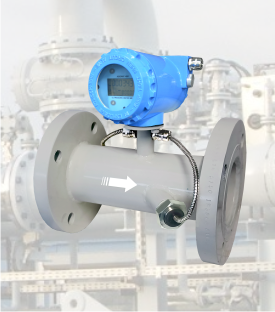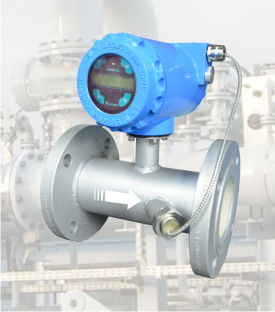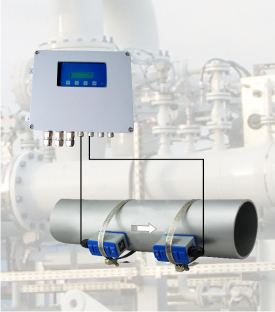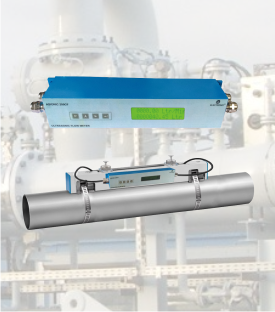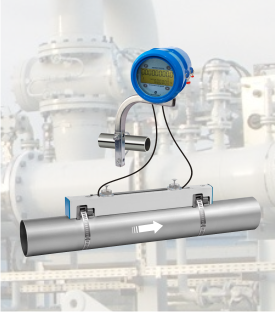How Ultrasonic Flow Meter Works?
Ultrasonic flow meters operate using the transit-time differential method technology. A sound wave travelling in the direction of flow of the product is propagated at a faster rate than one travelling against the flow (vAB > vBA). Transit times tAB and tBA are measured continuously. The difference (tBA-tAB) in time travelled by the two ultrasonic waves is directly proportional to the mean flow velocity (vm).
Where,
tAB is Time required for ultrasonic wave to travel from Sensor A to sensor B.
tBA is Time required for ultrasonic wave to travel from Sensor B to sensor A.
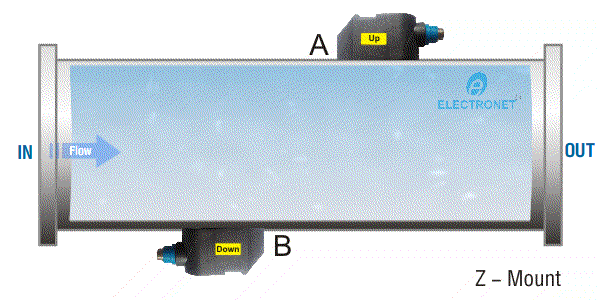
An ultrasonic flow meter measures the velocity of a fluid with ultrasound to calculate volume flow. Using ultrasonic transducers, the flow meter can measure the average velocity along the path of an emitted beam of ultrasound, by averaging the difference in measured transit time between the pulses of ultrasound propagating into and against the direction of the flow or by measuring the frequency shift from the Doppler effect. Ultrasonic flow meters are affected by the acoustic properties of the fluid and can be impacted by temperature, density, viscosity and suspended particulates depending on the exact flow meter.
Why Choose Ultrasonic Flow Meter?
Ease-of-Installation: The largest benefit of any clamp-on transit-time flow meter is the ease-of-installation. While still requiring sections of straight pipe upstream of the measurement location, the process does not require shutting the system down to install, making maintenance and upkeep of transit-time meters much more attractive.
Low maintenance: There are no blades to wear out or bearings to replace as in turbine meters, nor are there electrodes that can foul over time as in magnetic flow meters.
Related Products:
Ultrasonic
Flow Meters

